实验1
实验任务1:
task1_1.py
#print输出的几种用法 #用法1:用于输出单个字符或单个变量 print('hey,u') #用法2:用于输出多个数据项,用逗号分隔 print('hey,u') x,y,z=1,2,3 print(x,y,z) #用法3:用户混合字符串与变量值 print('x = %d, y = %d, z = %d' %(x,y,z)) print('x = {}, y = {}, z = {}'.format(x,y,z)) print(f'x = {x}, y = {y}, z = {z}') #其它: 输出后是否换行 print(x) print(y) print(z) print(x, end=' ') print(y, end=' ') print(z)
运行截图:
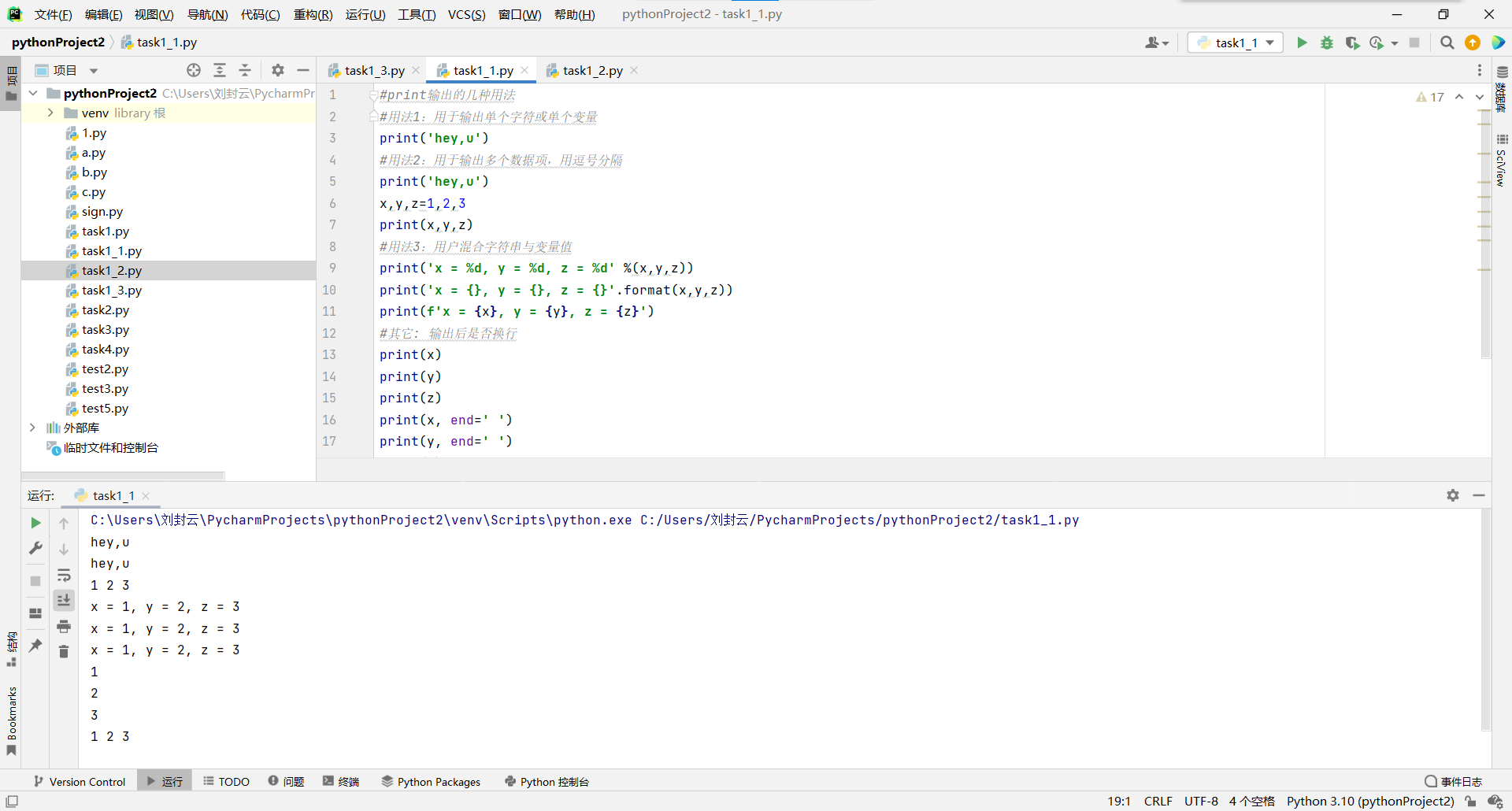
# 使用字符串的format()方法,对输出数据项进行格式化 x1, y1 = 1.2, 3.57 x2, y2 = 2.26, 8.7 # 输出1 print('{:-^40}'.format('输出1')) print('x1 = {}, y1 = {}'.format(x1, y1)) print('x2 = {}, y2 = {}'.format(x2, y2)) # 输出2 print('{:-^40}'.format('输出2')) print('x1 = {:.1f}, y1 = {:.1f}'.format(x1, y1)) print('x2 = {:.1f}, y2 = {:.1f}'.format(x2, y2)) # 输出3 print('{:-^40}'.format('输出3')) print('x1 = {:<15.1f}, y1 = {:<15.1f}'.format(x1, y1)) print('x2 = {:<15.1f}, y2 = {:<15.1f}'.format(x2, y2)) # 输出4 print('{:-^40}'.format('输出3')) print('x1 = {:>15.1f}, y1 = {:>15.1f}'.format(x1, y1)) print('x2 = {:>15.1f}, y2 = {:>15.1f}'.format(x2, y2))
运行截图:
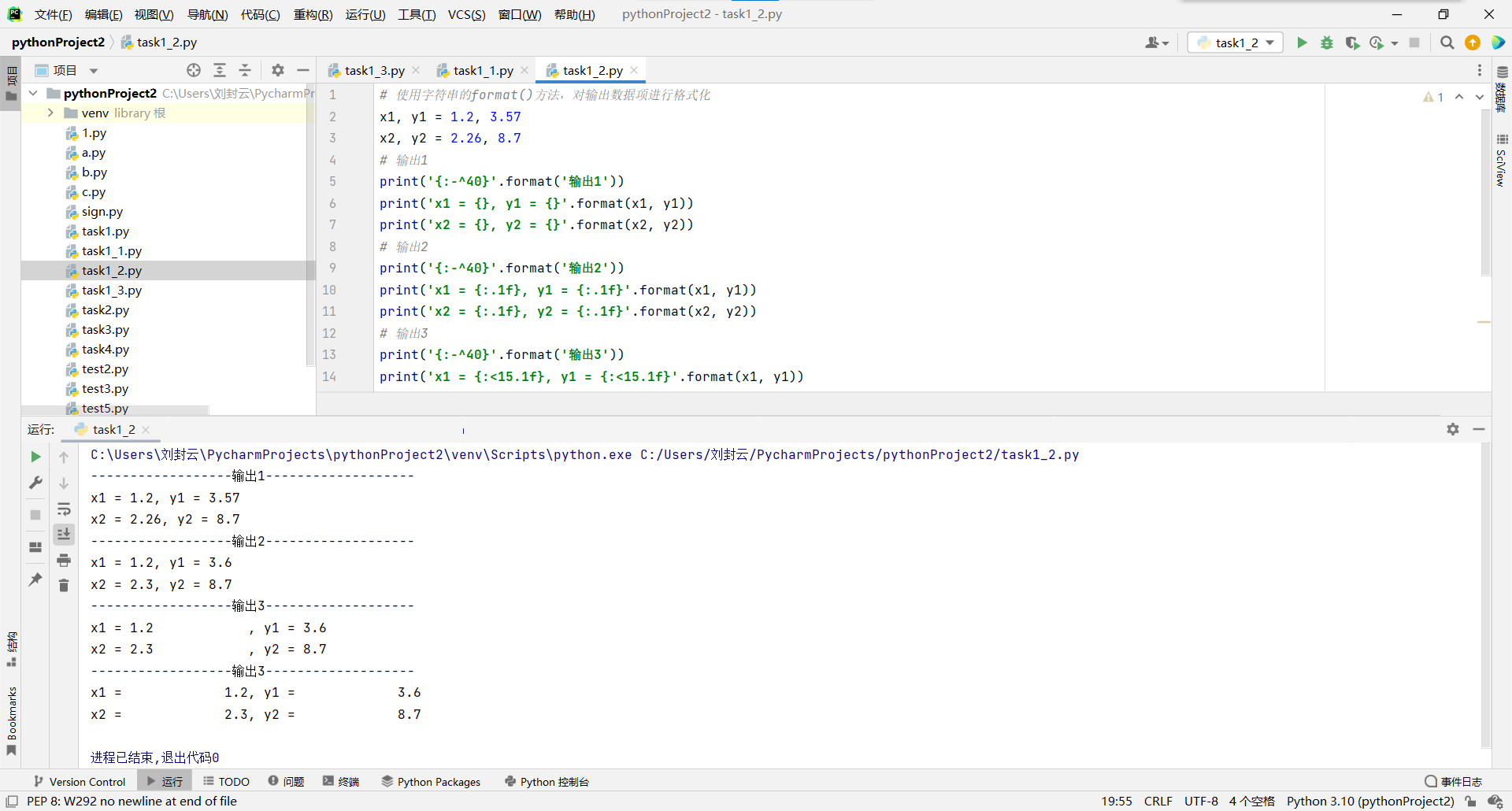
task1_3.py
# 使用f-string方式输出数据并控制格式 name1, age1 = 'Bill', 19 name2, age2 = 'Hellen', 18 title = 'Personnel Information' print(f'{title:=^40}') print(f'name: {name1:10}, age: {age1:3}') print(f'name: {name2:10}, age: {age2:3}') print(40*'=')
运行截图:
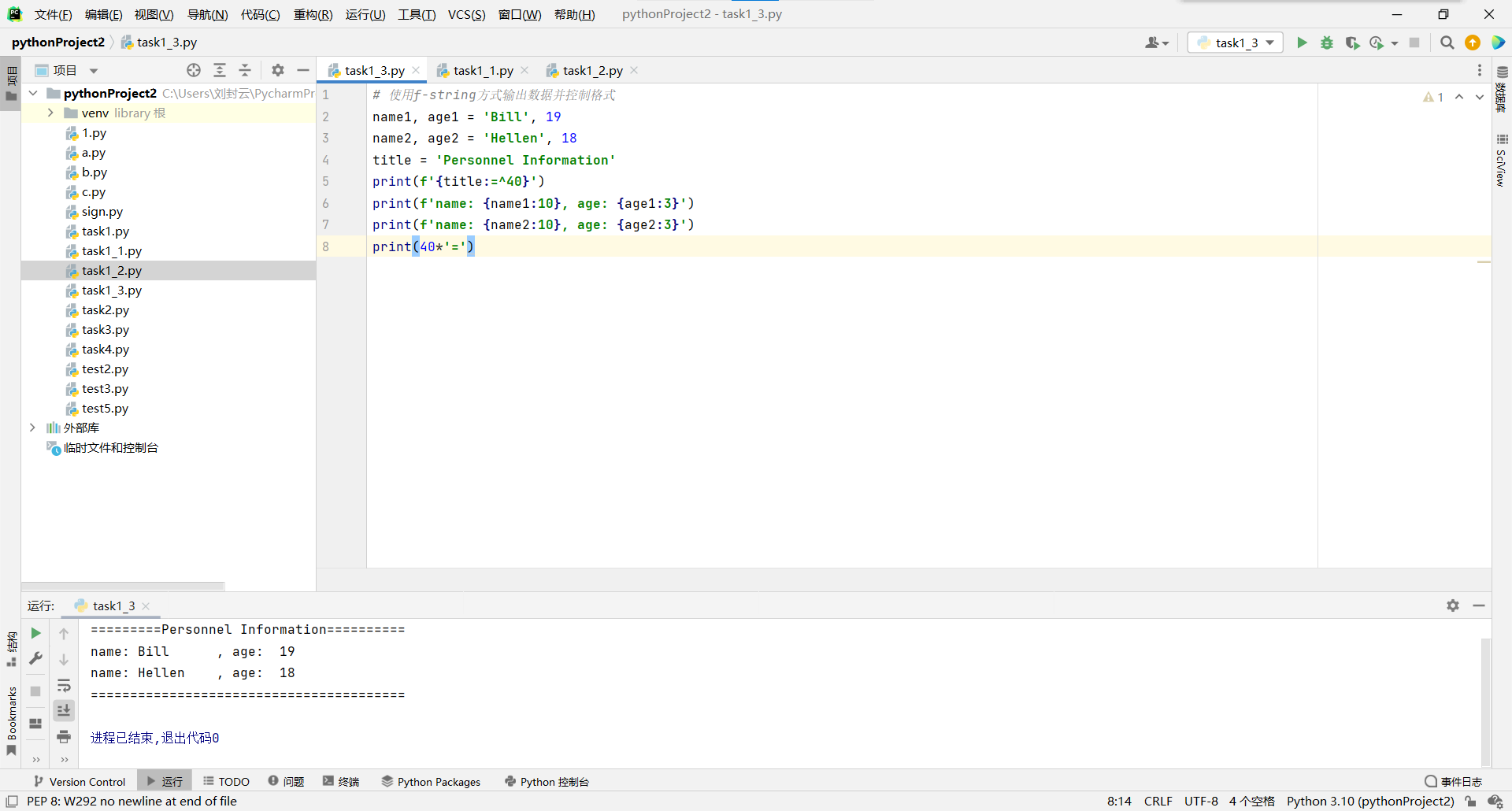
print()的几种常用用法:
用法1:用于输出单个字符串或单个变量
用法2:用于输出多个数据项,用逗号分隔
用法3:用户混合字符串和变量值
用法4:使用字符串的format()方法,对输出数据项进行格式化
用法5:使用f-string方式输出数据并控制格式
实验任务2:
task2_1.py
# 内置函数eval() r1 = eval('1 + 2') print(type(r1), r1) r2 = eval('[1, 6, 7.5]') print(type(r2), r2) r3 = eval('"python"') print(type(r3), r3) r4 = eval('7, 42') print(type(r4), r4)

task2_2.py
# 组合使用内置函数eval()和input() x, y = eval(input('Enter two oprands: ')) ans = x + y print(f'{x} + {y} = {ans}') print(f'{type(x)} + {type(y)} = {type(ans)}')
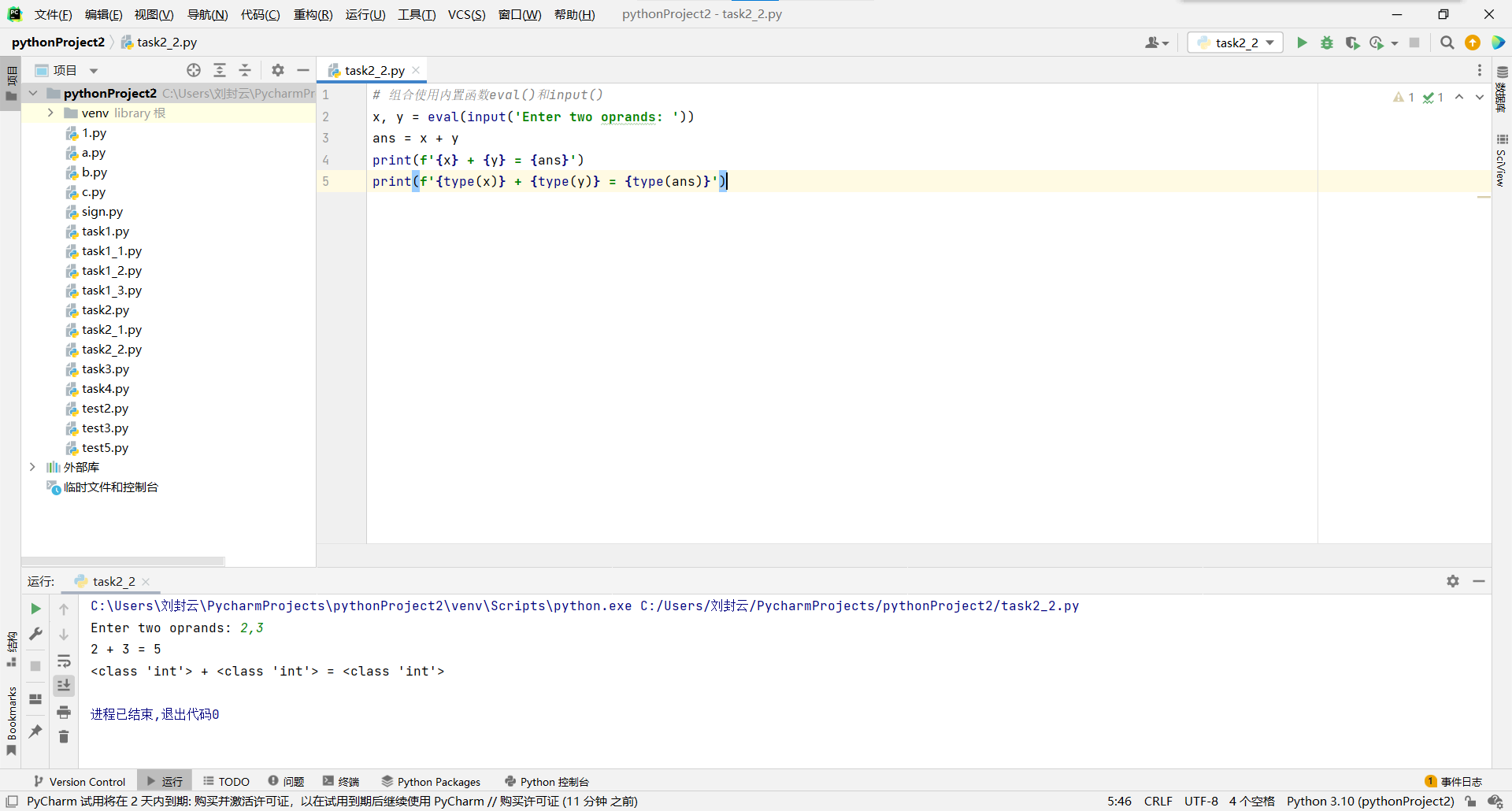
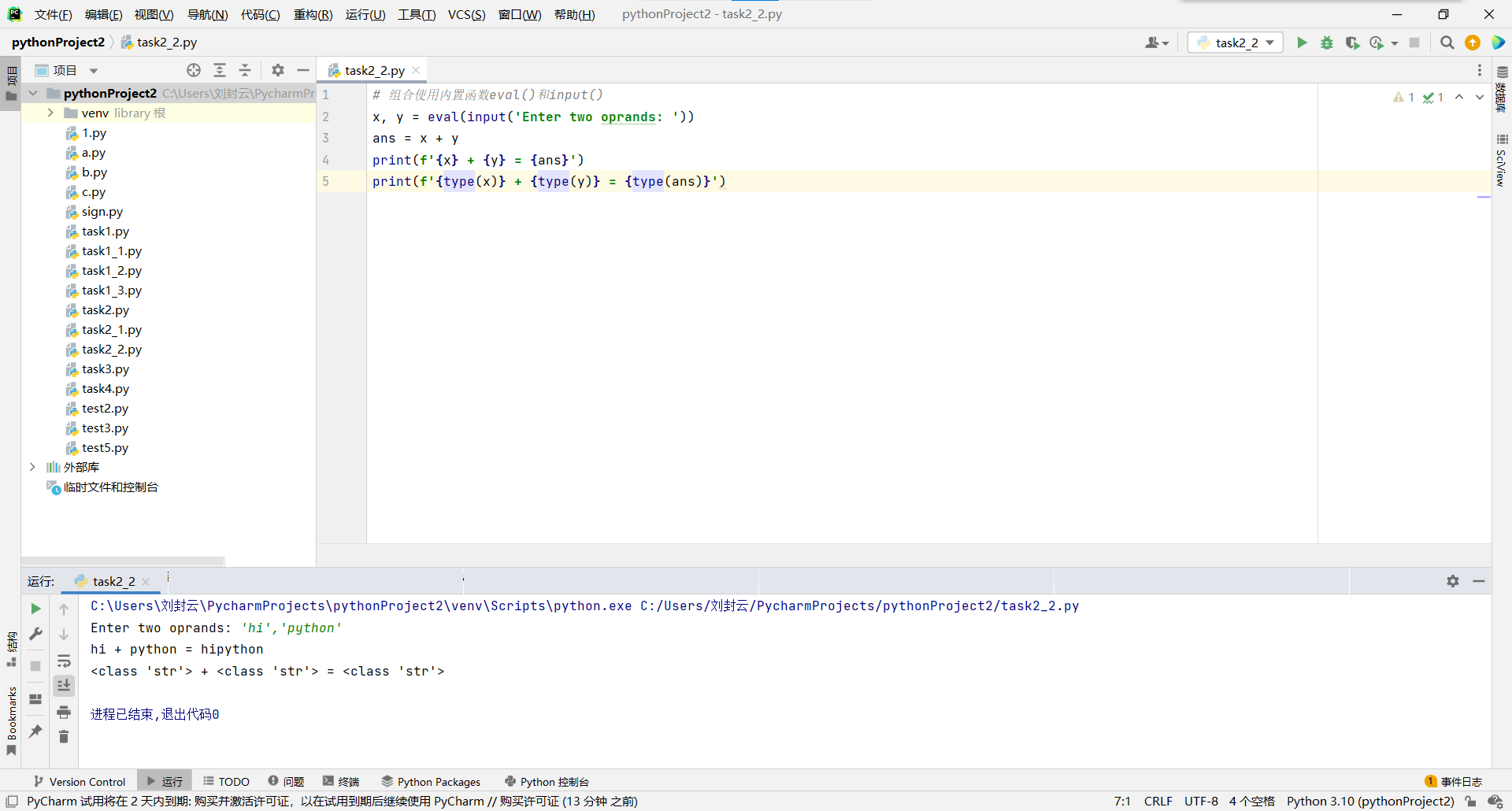
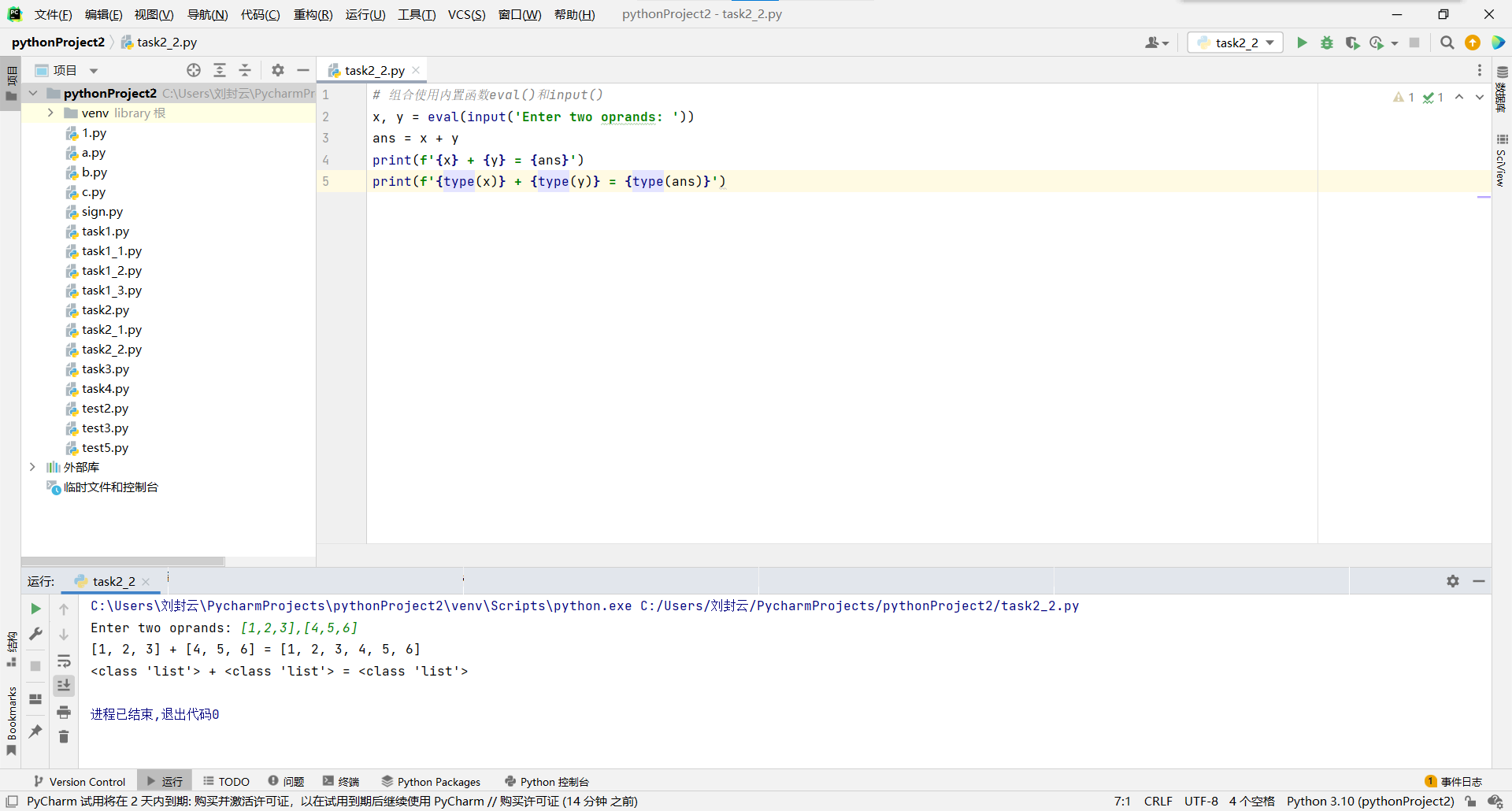
eval的用法为把字符串转换为python表达式,相当于把圆括号中的内容,两侧引号去掉
实验任务3:
task3——_1.py
# 浮点数简单运算 ans1 = 0.1 + 0.2 print(f'0.1 + 0.2 = {ans1}') from decimal import Decimal ans2 = Decimal('0.1') + Decimal('0.2') print(f'0.1 + 0.2 = {ans2}')

1.因为0.1与0.2在二进制浮点中没有精确的表示,其中的误差将妨碍可靠的相等性检验,并且误差还会不断累积,而对于 decimal 浮点数,会精确表示0.3
2.机器进行二进制计算引入的误差,为了消除这样的误差,进行更加精确的浮点计算,就要是用到decimal模块。我们直接导入decimal模块里的所有函数。现在我们可以通过Decimal函数构建十进制浮点数,并进行常规的数值计算。注意,Decimal函数传入的浮点数必须加引号(”),表示成字符串形式。传入整数时就不用加。Decimal函数的对象类型是decimal.Decimal,可以通过type()函数查看。
浮点数据转换成Decimal。Decimal函数并不建议传入浮点型数据,因为浮点型数据本身就是不精确的。
实验任务4:
task4_1.py
# 字符编码相关 # chr()返回unicode编码对应的字符 print(chr(0x1f600), end = " ") print(chr(0x1f601), end = " ") print(chr(0x1f602), end = " ") print(chr(0x1f603), end = " ") print(chr(0x1f604)) print(chr(10000), end=" ") print(chr(0x025b), end=" ") print(chr(0x2708), end=" ") print(chr(0x00A5), end=" ") print(chr(0x266b)) # ord()返回字符的unicode编码 print(ord('a'), end = " ") print(ord('b'), end = " ") print(ord('c')) print(ord('A'), end = " ") print(ord('B'), end = " ") print(ord('C')) print(ord('0'), end = " ") print(ord('1'), end = " ") print(ord('2'))
运行截图:
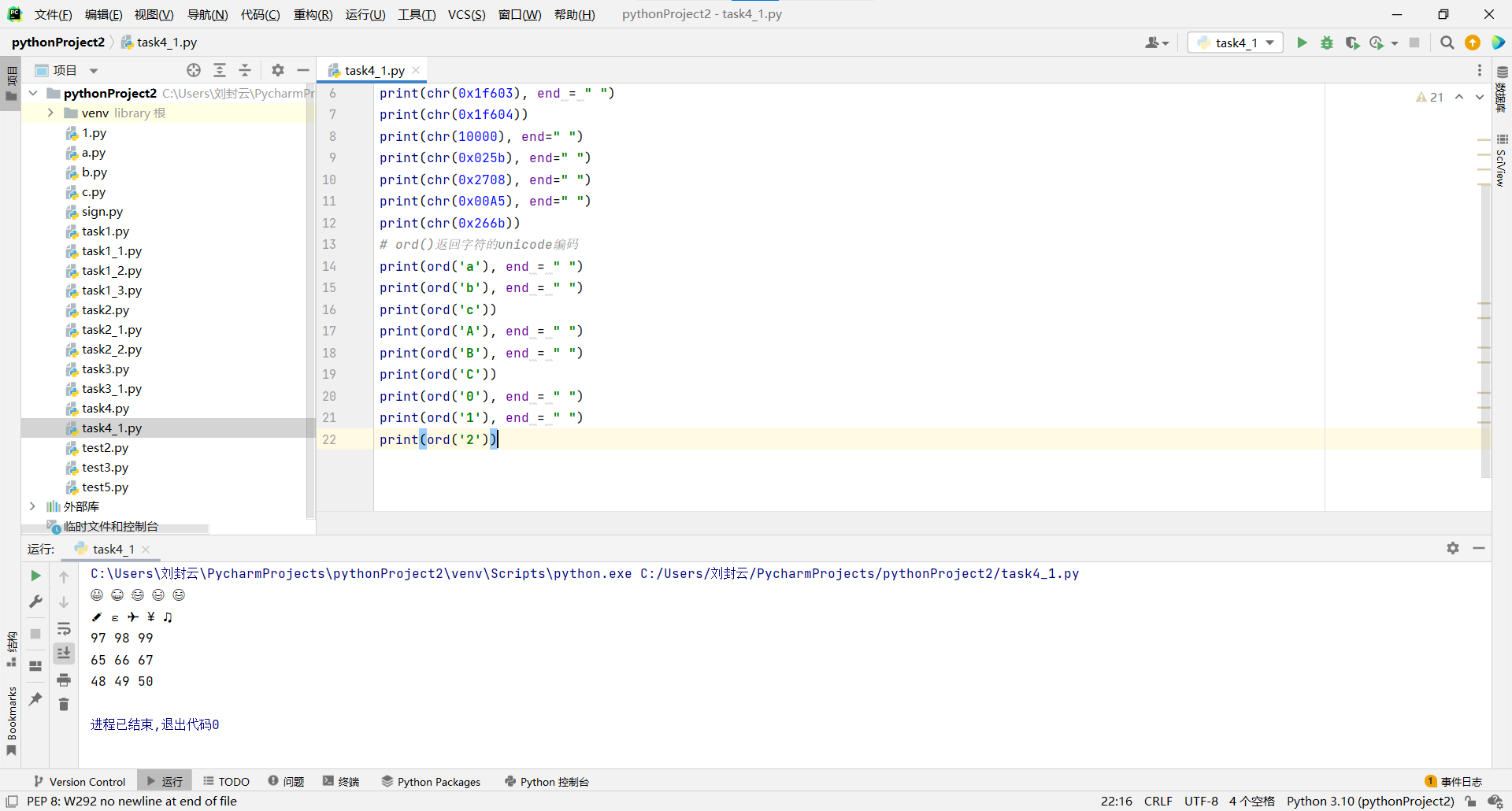
总结:chr()返回unicode编码对应的字符,而ord()返回字符的unicode编码
实验任务5:
task5_1.py
# 简单的数学计算 from math import sqrt n = float(input('输入一个数:')) # python中计算开平方的两种方式 ans1 = sqrt(n) ans2 = n**0.5 print('%.2f的平方根是: %.2f' %(n, ans1)) print('{:.2f}的平方根是: {:.2f}'.format(n, ans2)) print(f'{n:.2f}的平方根是: {ans2:.2f}')
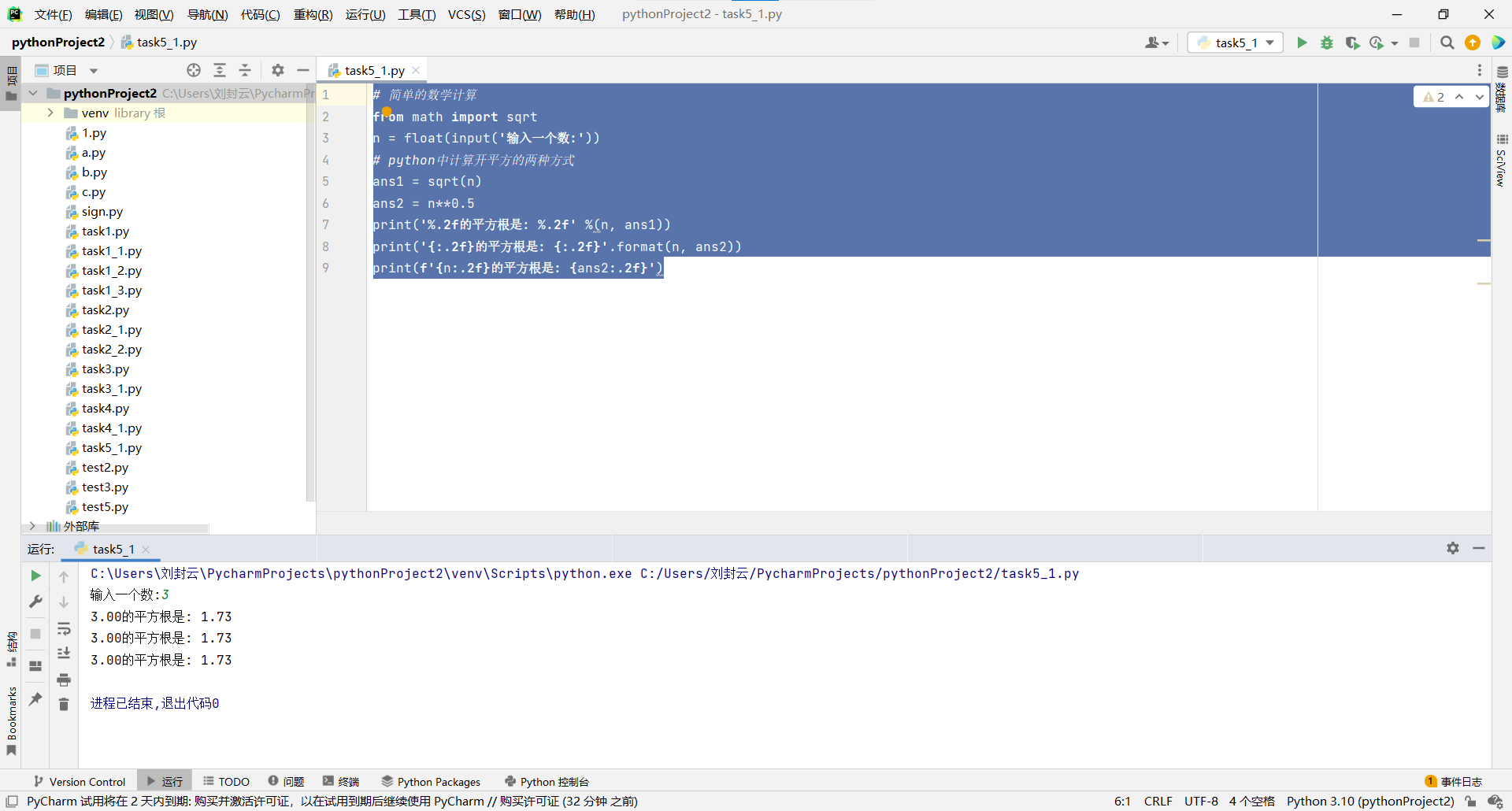
task5_2.py
# 神奇的pi, 与大饼 from math import pi text = ''' 好奇心是人的天性。 理想情况下,学习新东西是让人愉快的事。 但学校里的学习似乎有点像苦役。 有时候,需要画一个大饼,每次尝试学一些新鲜的,才会每天变得更好一点点。 ''' print(text) r = float(input('给学习画一个大饼,大饼要做的很大,半径要这么大: ')) circle = 2*pi*r print(f'绕起来,大饼的圆周有这么长, {circle}, 够不够激发你探索未知的动力...')
实验截图:
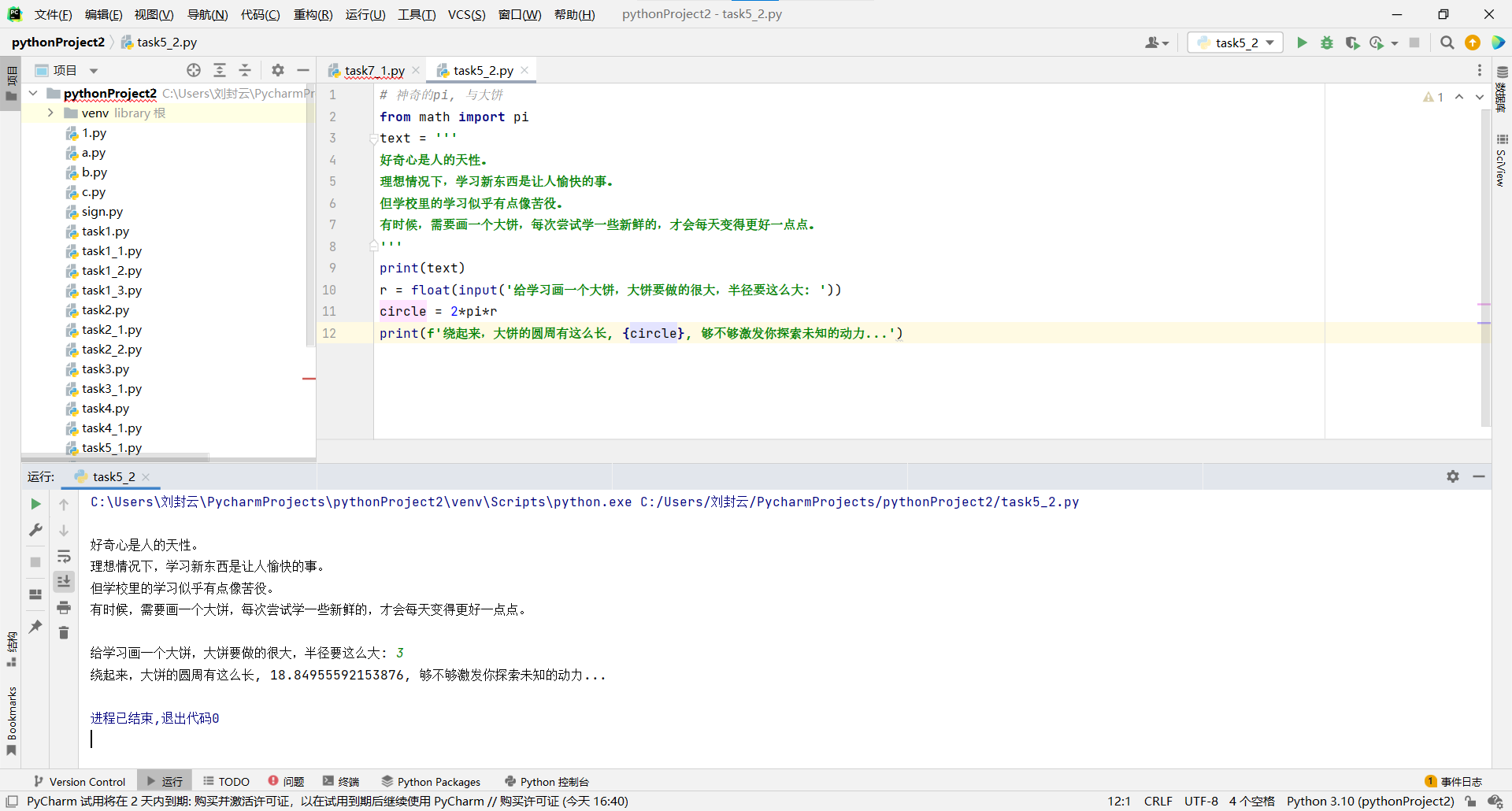
实验任务6:
task6_1.py
#task6_1.py x=eval(input("输入x:")) y=x**365 print("{}的365次方:".format(x),y)
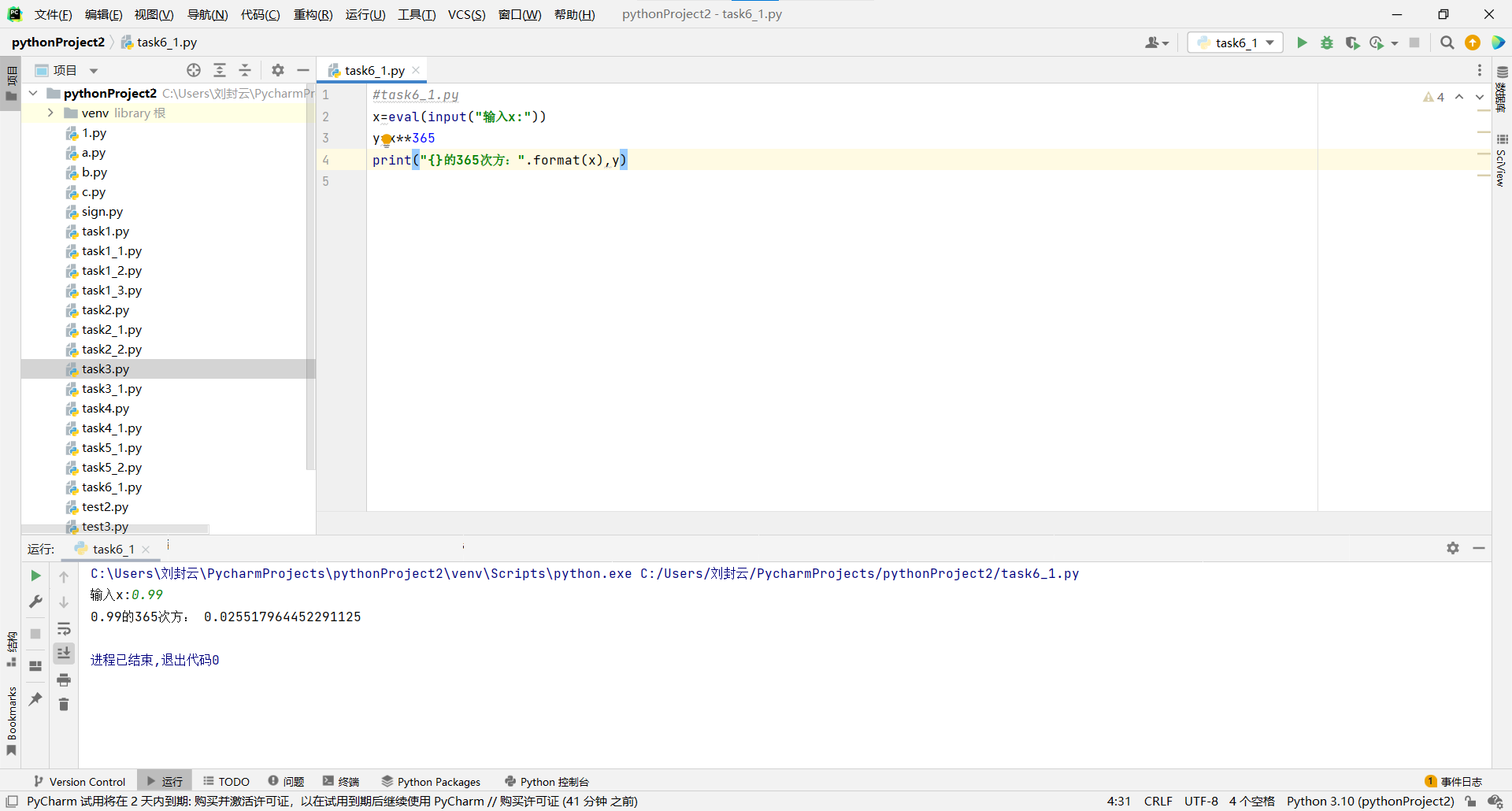
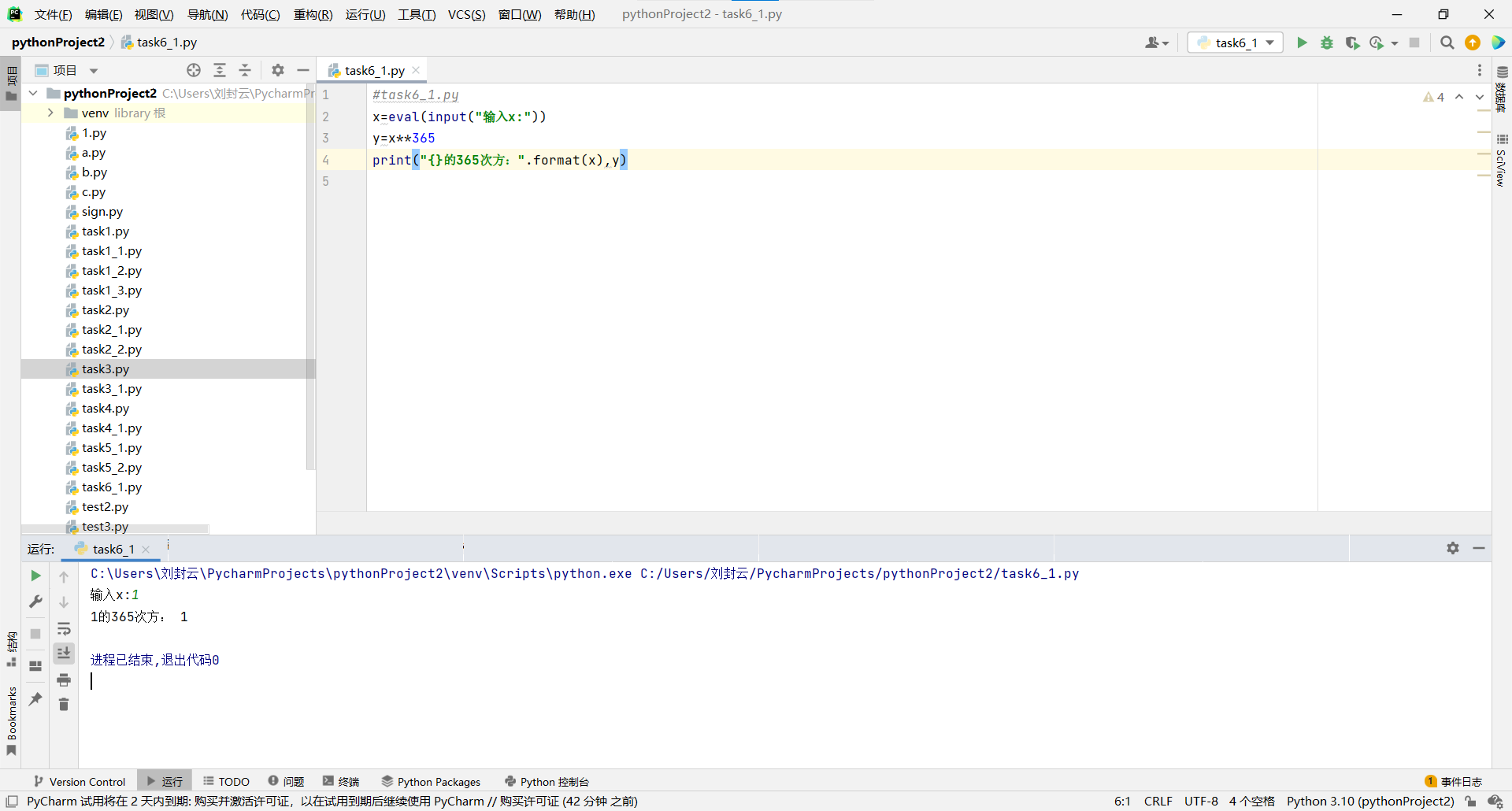
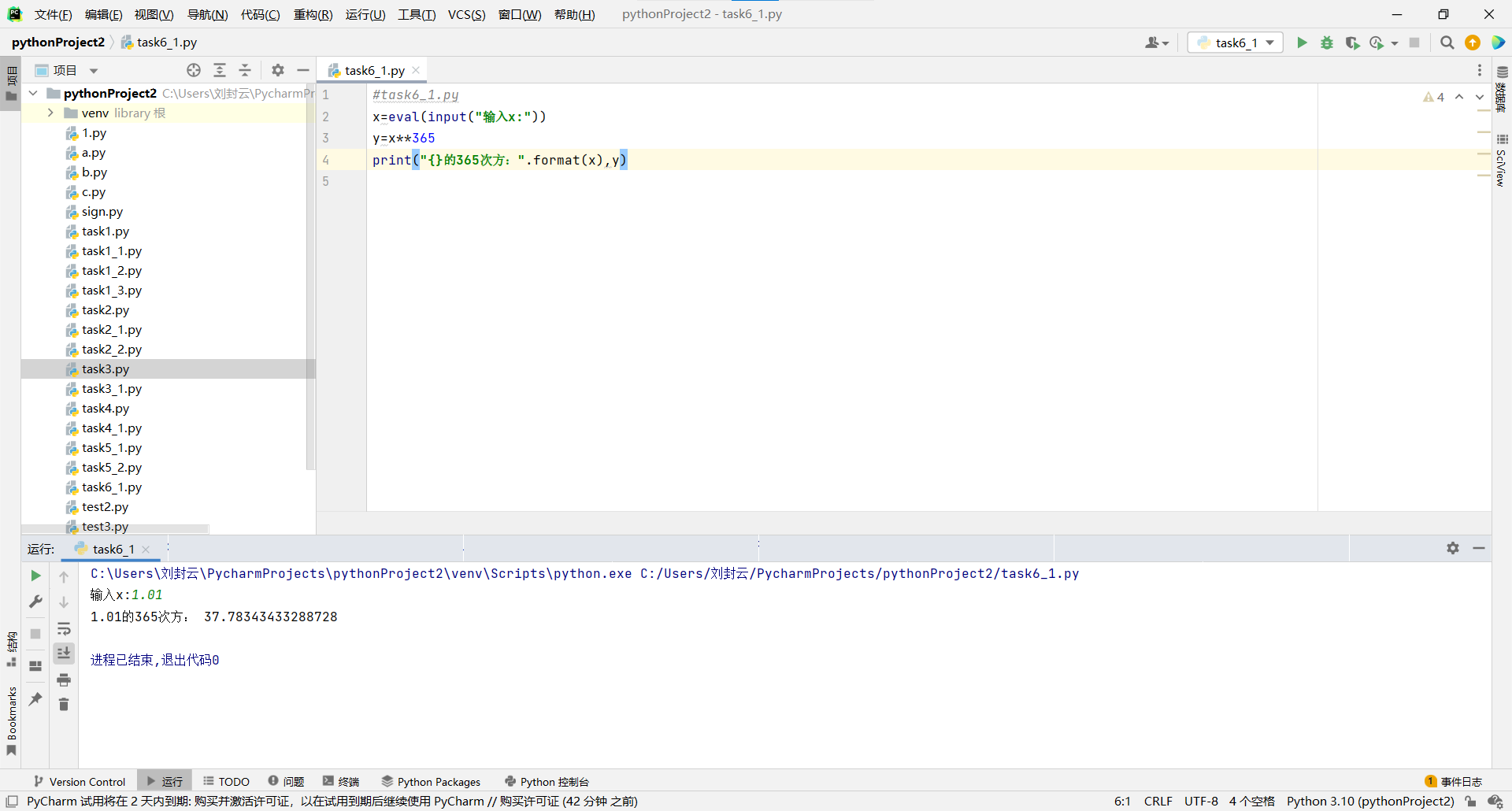
实验任务7:
task7_1.py
#task7_1.py from math import pi T0=eval(input("输入T0:")) M=67 p=1.038 c=3.7 K=0.054 Tw=100 Ty=70 import math t=(M**(2/3)*c*p**(1/3))/(K*pi**2*(4*pi/3)**(2/3))*math.log(((0.76*(T0-Tw))/(Ty-Tw)),math.e) T1=int(t) T2=int((t-T1)/60) print("T0={}℃,t=".format(T0),"{}分".format(T1),"{}秒".format(T2))
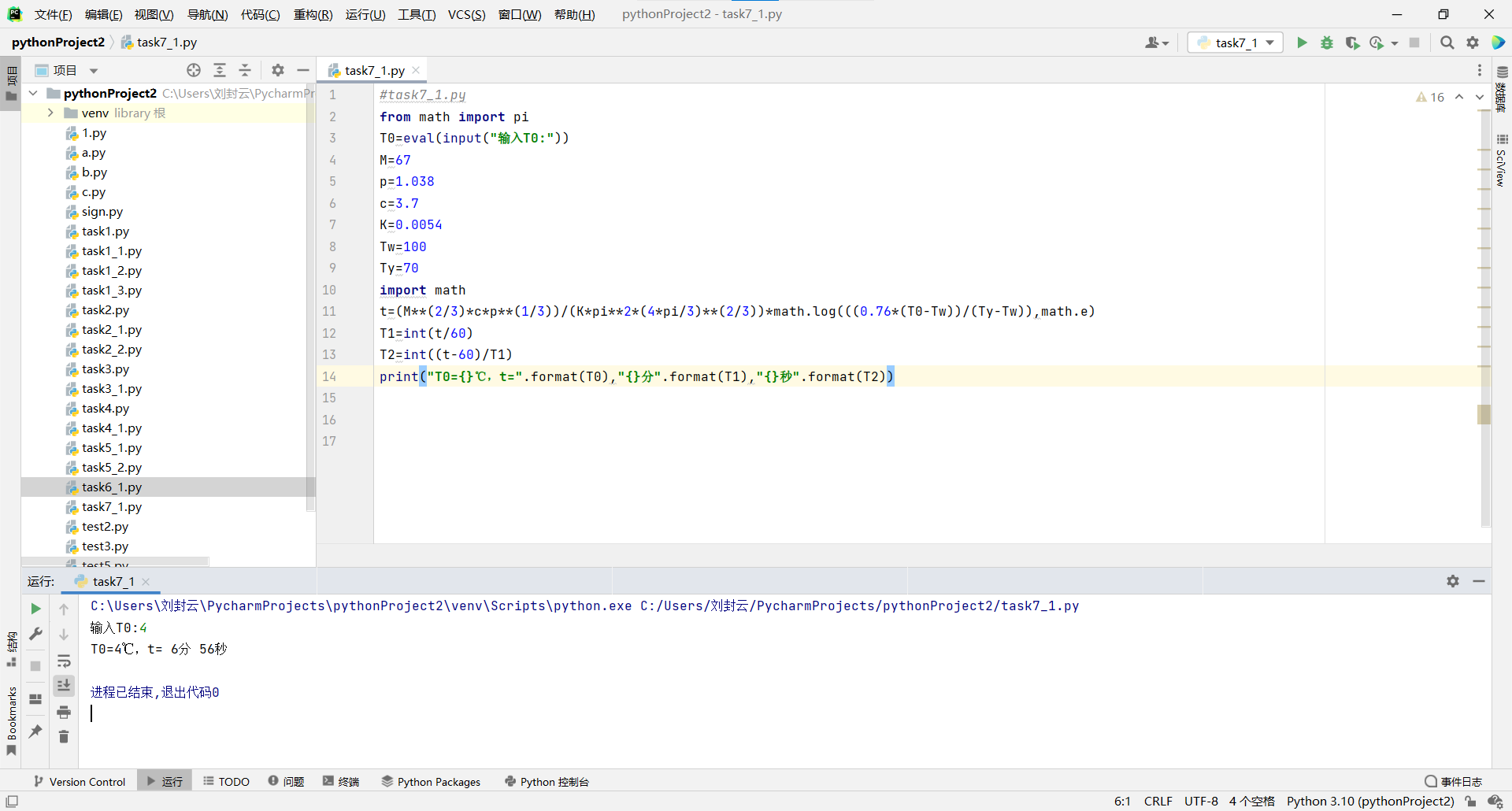
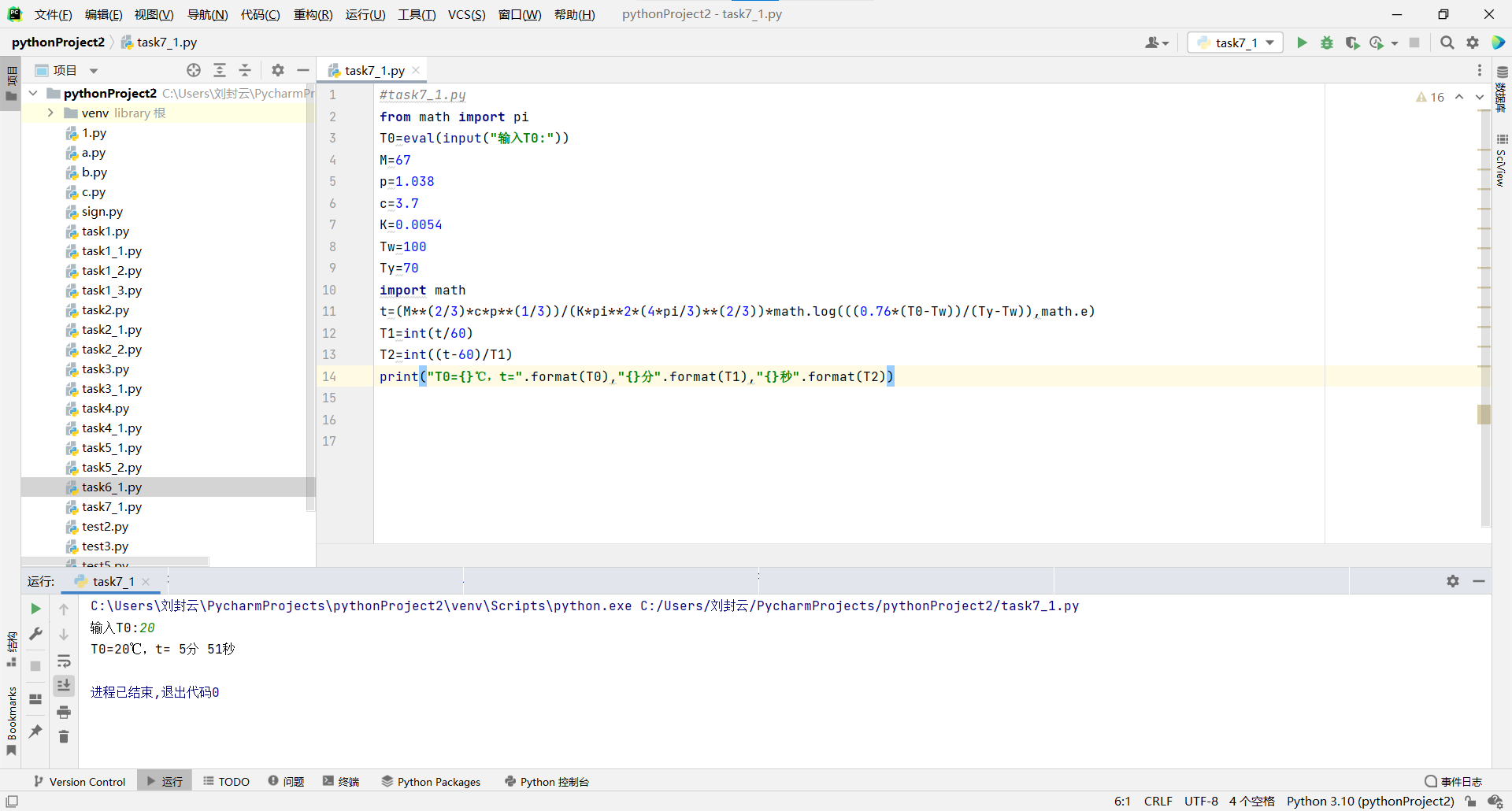
实验总结:
通过这次实验,我体验print()的不同用法,及其丰富的格式控制方式。在Python开发环境下,编写、运行以下Python代码,结合注释,观察运行结果,理解并学会使用内置函数eval(), input()。学习了解unicode编码,及内置函数chr()和ord()的功能。观察代码中是如何导入数学库math从而使用其内部工具的三引号的用法。



 浙公网安备 33010602011771号
浙公网安备 33010602011771号